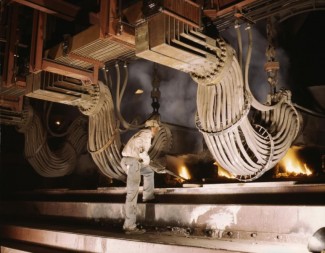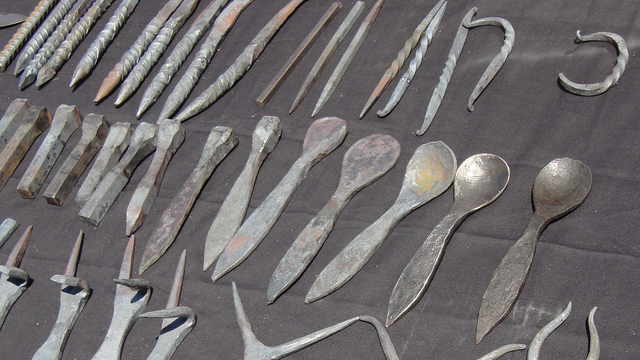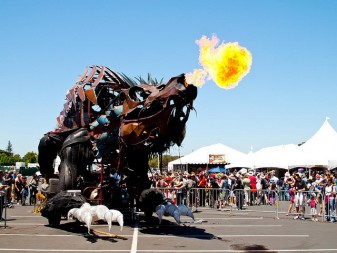May is Maker Month. As it draws to a close, the artists, scientists and engineers who call themselves "makers" look back with pride on their creations, many of which were showcased at last weekend's Maker Faire in San Mateo.
The modern maker movement is young; MAKE magazine began in 2005, the Maker Faire in 2006. But the maker urge is as old as humanity, and many modern maker hobbies were once major technological advances: tanning and weaving, brewing and baking, paper-making and printing. One particular pastime, metalworking, was such a powerful force in human history that we named several Ages of Man after key elements.
We tend to think of metalworking advances in engineering terms: harder weapons, stronger bridges. But the very first objects to be built out of metal were not tools, but decorations. Somewhere in the uncatalogued days of prehistory, humans began to make jewelry out of gold. It's the easiest metal to work--pure gold nuggets need no smelting and are soft enough to work with simple tools.
Gold, however, is the only metal that can be found readily in native form (meaning a lump of nothing but gold). Tin and lead, copper and iron--these all occur predominantly as minerals (meaning they're mixed with oxygen or sulfur or other annoying stuff). In order to get pure metal out of a mineral, you have to smelt it.

Somehow, humans figured out smelting well before writing, which frustrates archaeologists and totally amazes me. Writing seems like an obvious invention. You pick up a stick and scratch a message in the dirt to tell your friends which way you went hunting. But smelting is like alchemy, like magic. (Then again, I'm a writer, not a smelter.)


